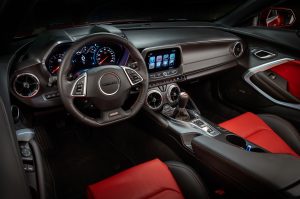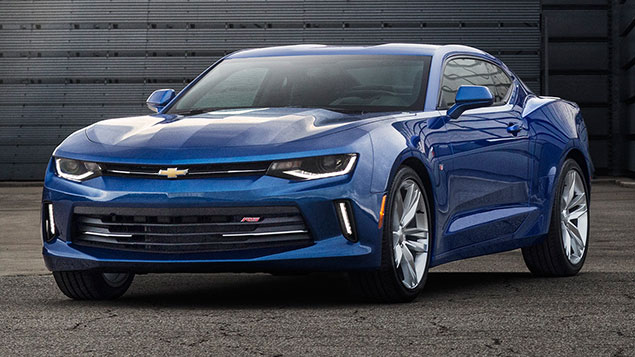By Shari Prymak
2016 Chevrolet Camaro SS Manual - When the Chevrolet Camaro was reborn for model year 2010, I, like many others, was totally smitten by its striking design. It was an effective blend of retro touches and modern sleekness. The stardom it got from the Transformers film didn’t hurt either. Not surprising then, styling was one thing that GM didn’t mess with too much for the latest Camaro. What has changed is just about everything else, and the result is quite dramatic.
The Camaro now shares its platform with the Cadillac ATS, a car which GM specifically designed to outperform the class-leading BMW 3-Series. The Camaro doesn’t feel like an ATS though, it feels better. Where the previous gen Camaro felt like a heavy, wallowy, lump, the new Camaro feels tight and composed. Body motions stay in check when firing into corners, and the steering and brakes have a sporty feel. Yet, despite the excellent handling, the ride is not at all uncomfortable. My test car’s outstanding magnetorheological dampers likely had something to do with that.
The chassis isn’t the only bit borrowed from the corporate parts bin. The Camaro SS uses the Corvette Stingray’s 6.2L LT1 small block V8 with the same 455 horsepower and 455lb-ft of torque. It’s a phenomenal engine, especially when paired with the ferociously loud dual-mode exhaust and slick 6-speed manual gearbox. 0-100km/hr takes around four seconds by most estimates, and thanks to the immense low-end grunt and theatrical exhaust, it feels every bit that fast. Lesser models use either a 2.0L 4-cylinder turbo or a 3.6L V6. The V6 with the dual-mode exhaust and 8-speed automatic blew me away to the point where I would have questioned the need for the SS; that is, until I drove it.

GM has raised the capabilities of the Camaro so high that it no longer feels like just another American muscle car. In many ways, it feels like a genuine alternative to the best sports coupes that Europe has to offer. The astonishing part is that there are higher performance versions yet to come, such as the 1LE package, ZL1, and the track-ready Z28.
Those European car comparisons quickly fade, however, when you spend some time in the Camaro’s cabin. It has many positive points, including the user-friendly controls and comfortable sport seats, but the overall fit and finish is a constant reminder that, at the end of the day, this is still a Chevrolet. The backseats are also borderline useless and the trunk has a ridiculously small opening. The unquestionable worst part, though, is the appalling outward visibility. It makes the Camaro more difficult to drive on a daily basis, and resting your arm on the door impossible due to the high beltline.
The interior annoyances, however, aren’t likely to be a dealer breaker for most, especially in light of the incredible performance and overall good value for money. Prices start at $29,095 for a turbo 4-cylinder model and $1,645 more for the V6. The V8-powered SS starts at $43,000. That’s more expensive than a Ford Mustang on all levels, but far cheaper than most European sports coupes with similar performance. Some have called the Camaro a Corvette Stingray with four seats, others an ATS-V with a V8. Whatever you call it, it’s fantastic.

